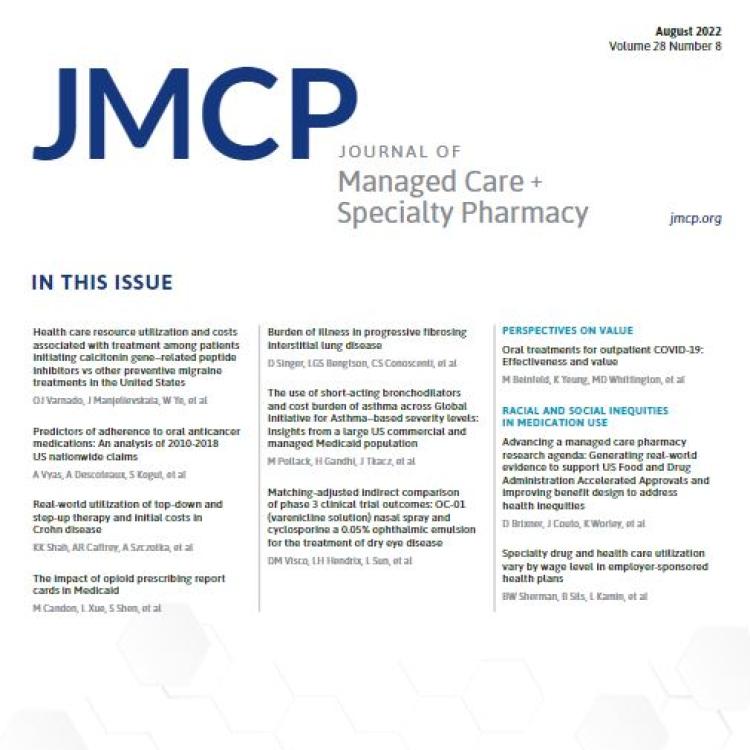Publication: Journal of Managed Care & Specialty Pharmacy, July 2022.
Authors: Ami Vyas, PhD, MS, MBA; Andrew Descoteaux, MS; Stephen Kogut, PhD, MBA, RPh; Megha A Parikh, PhD, MS; Patrick J Campbell, PhD, RPh; Amanda Green, MPH; Kimberly Westrich, MA
Background:
During the past decade, there has been a dramatic increase in the use of oral anticancer medications (OAMs). For a variety of reasons, OAMs may result in substantial patient out-of-pocket (OOP) costs. Higher OOP costs may lead to many barriers for patients such as prescription abandonment delayed initiation or other forms of non-adherence. Prior studies have shown medication nonadherence can lead to poorer outcomes and avoidable health care utilization, such as emergency or hospital care. Although cost can be a foremost barrier to patients taking their medications as prescribed, other factors such as clinical, sociodemographic, and health-system factors also can affect patient adherence to OAMs.
Given the expanding development of OAMs, it is crucial to understand factors that affect patient adherence. This study more closely examined factors associated with OAM adherence and identified what proportion of patients were adherent with newly initiated OAMs across 10 cancer types: blood, brain, breast, colorectal, liver, lung, ovarian, prostate, renal and stomach cancers.
Methodology:
This retrospective cohort study was conducted using data from Optum© Clinformatics® Data Mart commercial claims database for 2010-2018. Patients with a new pharmacy claim for an OAM between July 1, 2010, and December 31, 2017, were followed for six months to ascertain their medication adherence, which was defined as a proportion of days covered. Average monthly patient OOP costs for OAM prescriptions were categorized as lower OOP costs (quartiles: 1-3) and higher OOP costs (quartile 4). Separate multivariable logistic regressions were conducted to identify predictors of OAM nonadherence-adherence for each cancer type.
Results:
Overall adherence to OAMs was suboptimal, and for several cancer types, adherence was worse among patients with higher OOP costs, those who were hospitalized, and those who received Medicare low-income subsidies.
Specifically:
- Out of 37,938 patients with cancer, 51.9% were adherent to OAMs, with adherence ranging from 32.8% among those with liver cancer to 70.4% among those with brain cancer.
- The average monthly OOP costs of OAMs also differed by cancer type, ranging from $749 among patients with blood cancer to $106 among those with prostate cancer.
- Higher patient OOP costs were associated with greater odds of nonadherence for most of the cancer types in the study, including renal cancer and breast cancer.
- Patients with inpatient hospitalizations during the six months following OAM initiation had significantly higher odds of OAM nonadherence for all cancer types, except for stomach cancer.
- Among patients with stomach cancer, males were associated with lower odds of OAM nonadherence. Among patients with renal or stomach cancer, those who had Medicare low-income subsidies had higher odds of OAM nonadherence compared to those with commercial insurance coverage. Additionally, among patients with blood cancers, Black and Hispanic patients had higher odds of OAM nonadherence compared to White patients.
These findings raise concerns about patient access barriers as well as health equity concerns. Policies addressing cost and access to OAMs and health-system strategies to address barriers to the effective use of OAMs are needed to improve access to medications for all patients, regardless of their socioeconomic status.
